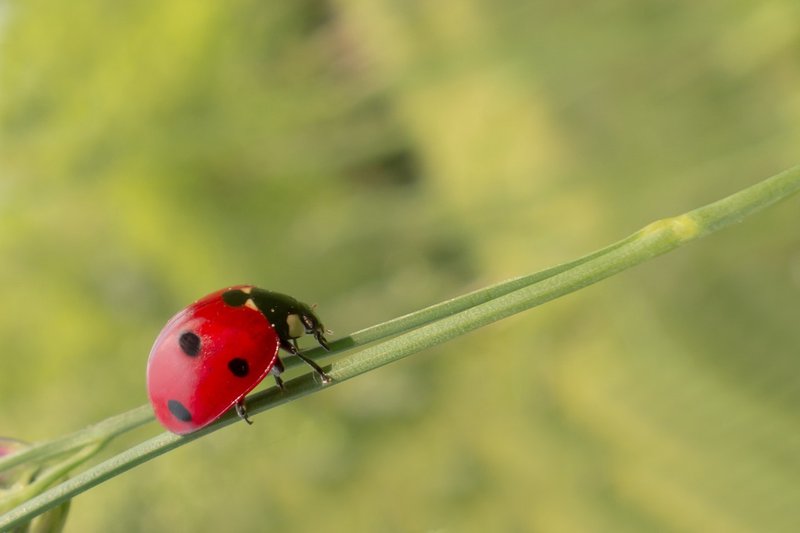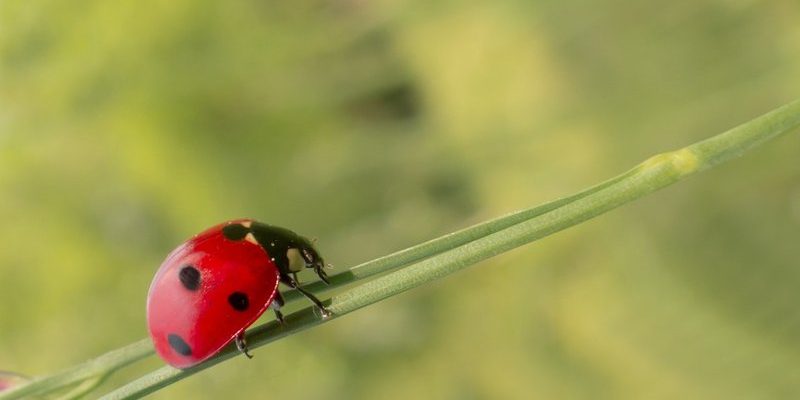
So, what makes ladybugs so special? Well, let’s dive into some fascinating facts that might surprise you. You might even feel inspired to look a little closer next time you see one. Whether you’re a nature enthusiast or just curious, understanding these tiny creatures can add a new layer of appreciation to your outdoor adventures.
1. What Exactly Are Ladybugs?
Ladybugs, or ladybird beetles, belong to the family Coccinellidae. They’re not actually bugs at all—they’re beetles! This family includes over 5,000 species worldwide, and they can be found on every continent except Antarctica. Most ladybugs are known for their bright red or orange bodies adorned with black spots, but did you know that they come in various colors? Some are yellow, black, or even blue!
These beetles are beneficial to gardens and crops because they’re voracious eaters of pests, especially aphids. So, when you see them, you can think of them as tiny gardeners helping to keep plants healthy. It’s like having a little army of helpers in your garden!
2. The Lucky Symbol
In many cultures, ladybugs are considered symbols of good luck. You might have heard that if one lands on you, it’s a sign that good fortune is on the way. This belief dates back centuries and varies from region to region. In some places, people believe that the number of spots on the ladybug can predict how lucky you’ll be.
For example, if you see a ladybug with seven spots, some say you’ll have seven months of good luck. However, the magic of ladybugs isn’t just in folklore; their presence indicates a healthy environment. So, whether you believe in luck or not, spotting a ladybug is definitely a good sign for your garden!
3. They Have an Interesting Diet
You might think ladybugs only eat pretty flowers, but that’s not the case. These beetles are fierce predators! Their main enemy? Aphids. A single ladybug can consume as many as 50 aphids in just one day. That’s like a single person eating 10 pizzas in one sitting! This makes them incredible allies for gardeners.
But ladybugs don’t just feast on aphids; they also munch on other pests like mites and mealybugs. So, next time you see one in your garden, give it a little nod of appreciation. It’s working hard to keep your plants healthy and pest-free!
4. The Life Cycle of a Ladybug
Ladybugs go through four distinct stages in their life cycle: egg, larva, pupa, and adult. It all starts with the female laying tiny yellow eggs, usually on the underside of leaves where tasty aphids are plentiful. After about a week, the eggs hatch into larvae, which look quite different from adult ladybugs. They’re often black or spiky and can be a bit alarming at first glance, but don’t worry—they’re just as helpful!
The larvae then eat aphids and grow rapidly. After several weeks, they enter the pupal stage, where they undergo a transformation. Eventually, they emerge as full-grown adult ladybugs, ready to start the cycle all over again. Isn’t it fascinating how they change throughout their life?
5. Colors and Patterns: A Warning Signal
While we often associate ladybugs with their bright colors, those hues play an important role. The vivid reds and yellows are actually a warning to predators. These colors signal that ladybugs are toxic and can taste bad, helping them avoid being eaten. Think of it as their own colorful armor!
Interestingly, not all ladybugs are bright and bold. Some have duller colors and patterns that help them blend into their surroundings. This camouflage allows them to hide from predators while they hunt for food. It’s a clever survival tactic that showcases the diversity among ladybug species.
6. The Ladybug’s Defense Mechanisms
When threatened, ladybugs have a few tricks up their sleeves. One of the most interesting is their ability to secrete a foul-smelling liquid from their legs. This substance not only deters predators but can also confuse them. Imagine being a bird about to snack on a ladybug, only to encounter a sour surprise!
Additionally, ladybugs can play dead. When they sense danger, they may drop to the ground and become completely still, making it harder for predators to spot them. It’s a clever little act that can save their lives.
7. They Can Overwinter
As the colder months approach, ladybugs prepare for winter just like many other creatures. They look for cozy spots to overwinter—often gathering in large groups to share warmth. You’ll find them hiding under tree bark, in leaf litter, or even in your home if they can find a way in!
During this time, they enter a state of dormancy, slowing their metabolism and conserving energy. When spring arrives, they wake up, ready to start their busy lives again. This ability to survive harsh conditions shows just how resilient these little beetles are.
8. Ladybugs and Their Environment
Ladybugs play a crucial role in maintaining the health of our ecosystems. By controlling pest populations, they help promote plant growth and biodiversity. Gardens with ladybugs tend to flourish because they help keep harmful insect populations in check, reducing the need for chemical pesticides.
You might be wondering how to attract these beneficial beetles to your garden. A few simple steps can make a difference:
- Plant a variety of flowers, especially those that produce nectar.
- Avoid using pesticides, which can harm ladybugs.
- Create a welcoming habitat with some shelter, like tall grasses or small bushes.
By fostering an environment for ladybugs, you’re not only doing them a favor, but you’re also helping your garden thrive.
9. The Myths and Misconceptions
There are plenty of myths surrounding ladybugs. One common misconception is that all ladybugs are harmless. While they are beneficial for gardens, some species can actually become pests themselves. For example, the Asian lady beetle, often mistaken for the common ladybug, can invade homes in large numbers.
Another myth is that all ladybugs can fly. While most can, their ability to fly varies depending on the species. Some are better fliers than others, and some might prefer to stay close to the ground, relying on their natural camouflage to evade predators.
10. The Importance of Conservation
As we learn more about ladybugs and their incredible lives, it’s essential to recognize that many species are threatened by habitat loss, climate change, and pesticide use. Protecting their habitats and supporting organic gardening practices can make a real difference.
Here’s how you can help:
- Participate in local conservation efforts.
- Support farmers who use sustainable practices.
- Share your knowledge about ladybugs with friends and family!
By spreading awareness and taking action, we can help ensure that ladybugs remain a familiar sight in our gardens for generations to come.
In conclusion, ladybugs are more than just pretty insects. They play vital roles in our ecosystems and have fascinating lives that deserve our respect. Next time you see one, take a moment to appreciate all the hidden wonders behind those tiny red shells. They’re not just lucky; they’re essential to the world we live in!

